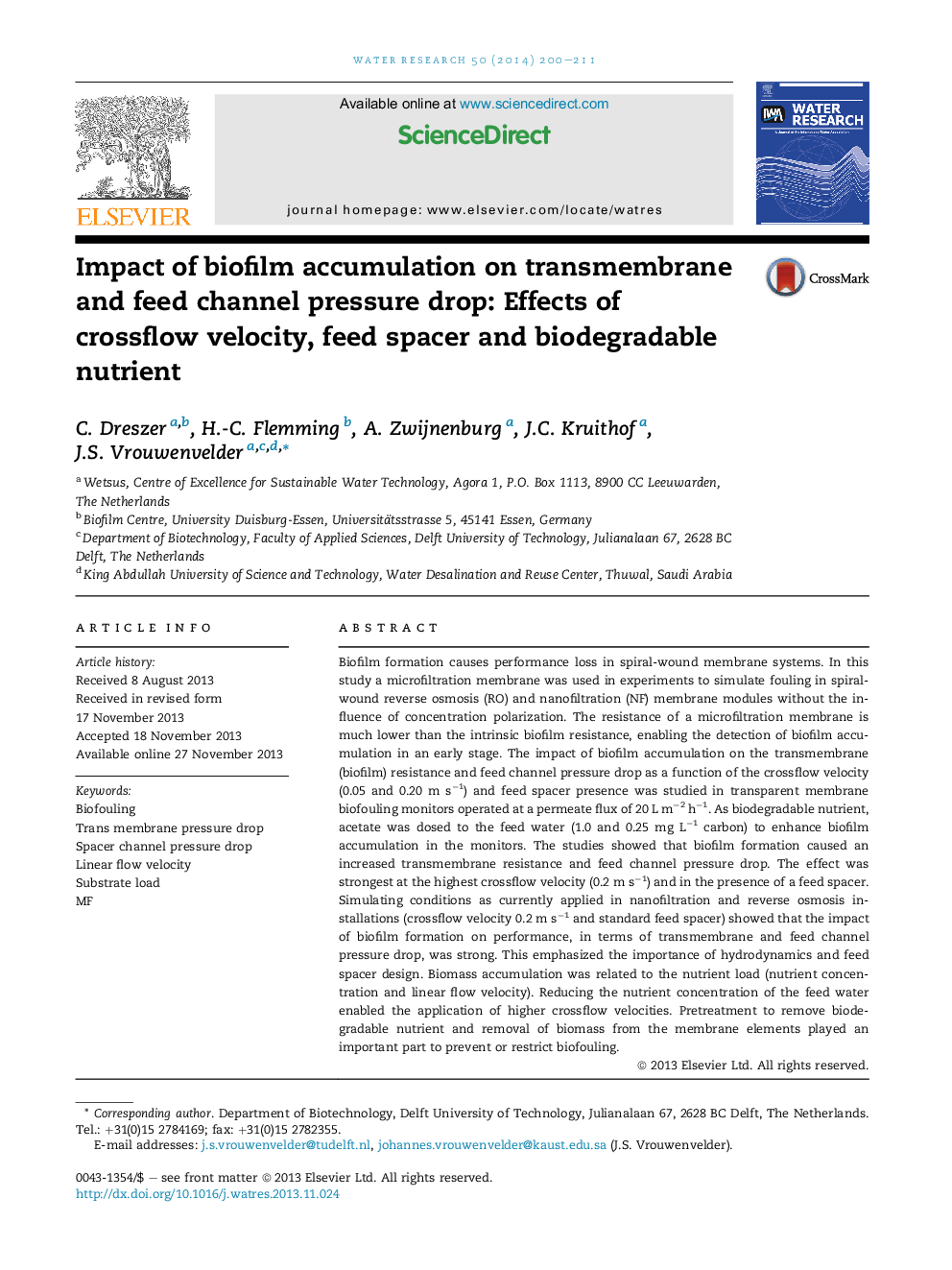| کد مقاله | کد نشریه | سال انتشار | مقاله انگلیسی | نسخه تمام متن |
|---|---|---|---|---|
| 6366970 | 1623118 | 2014 | 12 صفحه PDF | دانلود رایگان |
- Biofouling increased both transmembrane resistance and feed channel pressure drop.
- Largest problems occurred at high crossflow velocity in presence of a feed spacer.
- An increase of crossflow velocity caused a stronger biofilm formation.
- Biomass accumulation was related to the nutrient load.
- Current membrane practice increased the impact of biofouling on performance.
Biofilm formation causes performance loss in spiral-wound membrane systems. In this study a microfiltration membrane was used in experiments to simulate fouling in spiral-wound reverse osmosis (RO) and nanofiltration (NF) membrane modules without the influence of concentration polarization. The resistance of a microfiltration membrane is much lower than the intrinsic biofilm resistance, enabling the detection of biofilm accumulation in an early stage. The impact of biofilm accumulation on the transmembrane (biofilm) resistance and feed channel pressure drop as a function of the crossflow velocity (0.05 and 0.20 m sâ1) and feed spacer presence was studied in transparent membrane biofouling monitors operated at a permeate flux of 20 L mâ2 hâ1. As biodegradable nutrient, acetate was dosed to the feed water (1.0 and 0.25 mg Lâ1 carbon) to enhance biofilm accumulation in the monitors. The studies showed that biofilm formation caused an increased transmembrane resistance and feed channel pressure drop. The effect was strongest at the highest crossflow velocity (0.2 m sâ1) and in the presence of a feed spacer. Simulating conditions as currently applied in nanofiltration and reverse osmosis installations (crossflow velocity 0.2 m sâ1 and standard feed spacer) showed that the impact of biofilm formation on performance, in terms of transmembrane and feed channel pressure drop, was strong. This emphasized the importance of hydrodynamics and feed spacer design. Biomass accumulation was related to the nutrient load (nutrient concentration and linear flow velocity). Reducing the nutrient concentration of the feed water enabled the application of higher crossflow velocities. Pretreatment to remove biodegradable nutrient and removal of biomass from the membrane elements played an important part to prevent or restrict biofouling.
94
Journal: Water Research - Volume 50, 1 March 2014, Pages 200-211
